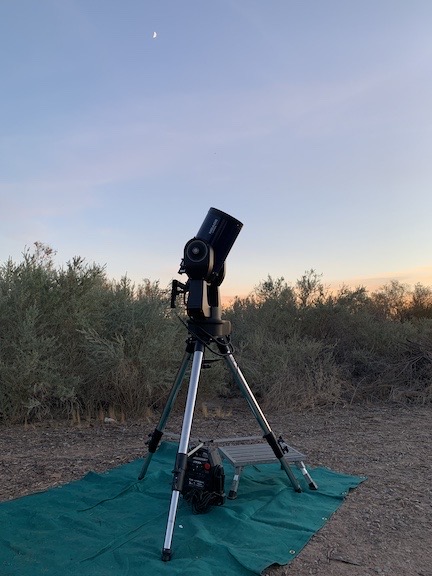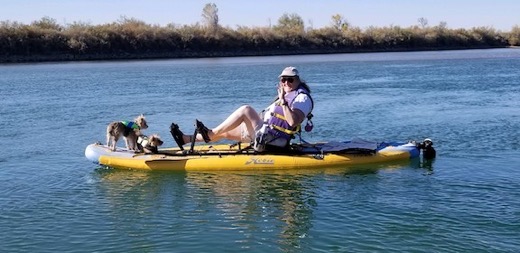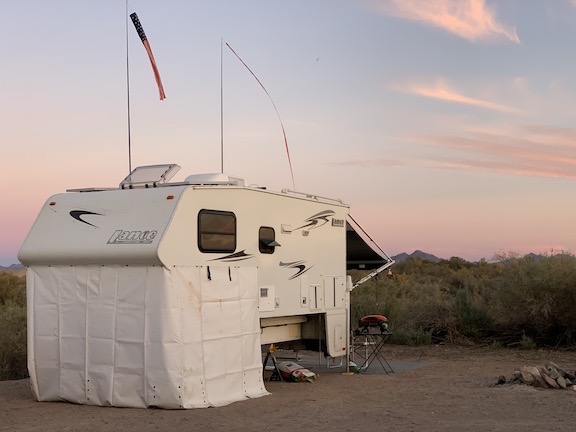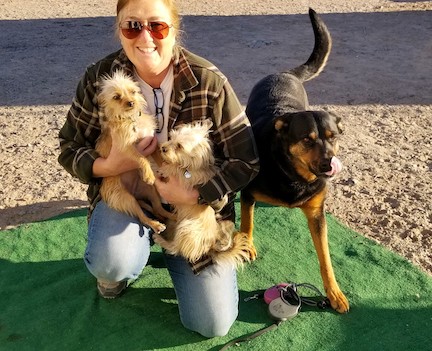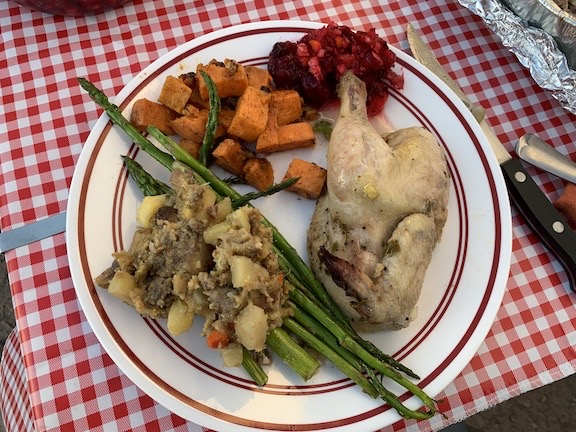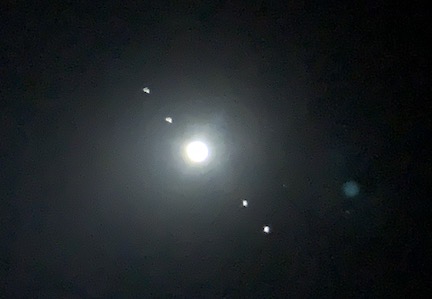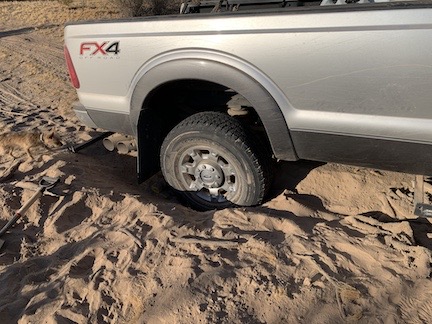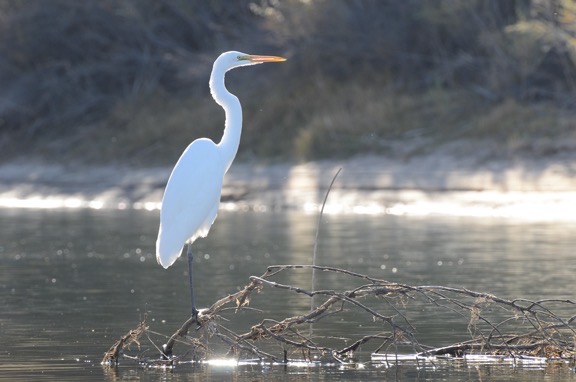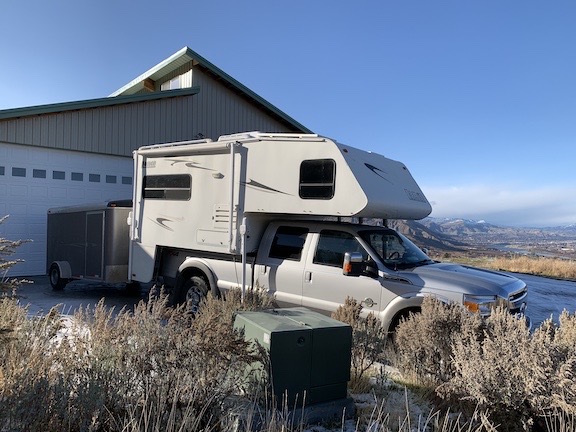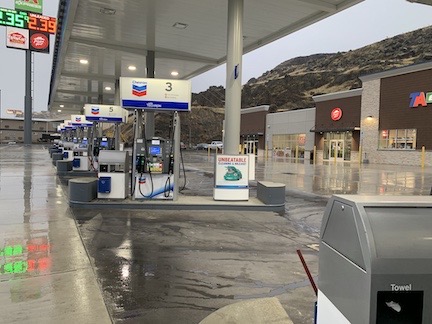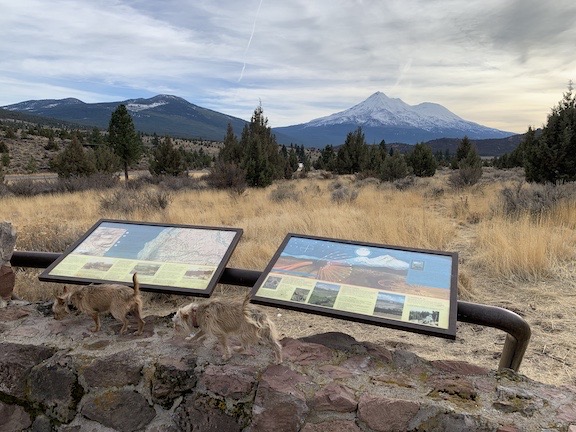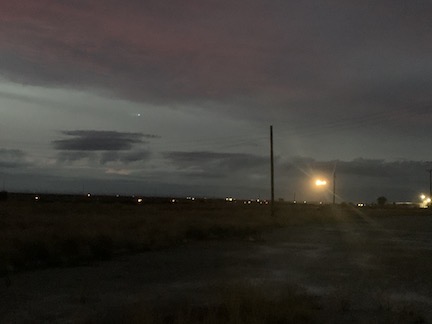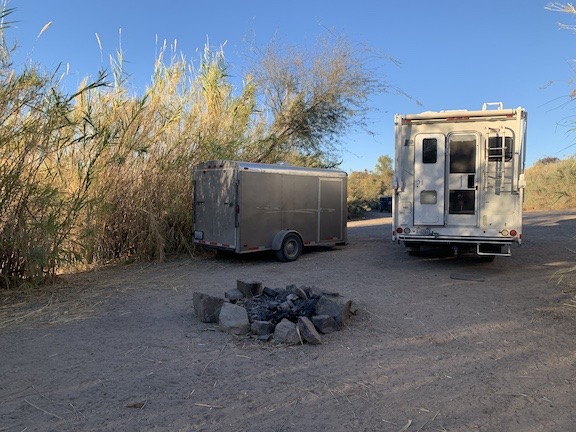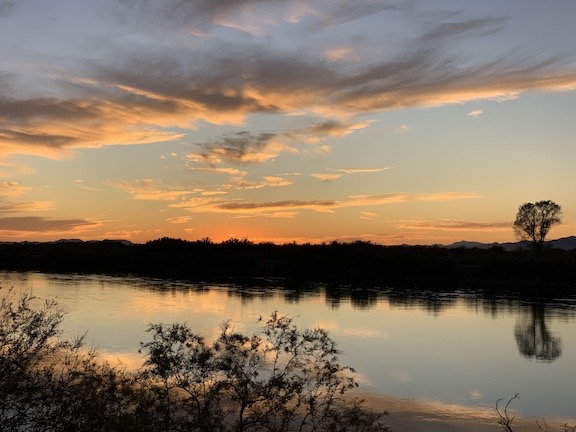I splurge on batteries and an inverter for my utility trailer/mobile jewelry shop.
For the past five winters, I’ve been traveling south in my truck with a slide in truck camper on the back. It started with “the Turtleback” in 2016/17. That was a very large and rather deluxe Lance model with all the bells and whistles, including an onboard generator and a slide-out to expand living space when parked. Then I downgraded to a smaller, newer rig, “T2,” which was roughly the same length, not quite as deluxe, and lacked both the slide and generator. What I gained in the swap was a 400-pound weight loss and a lot more inside storage space.
Why a Utility Trailer?
Over time, however, I started bringing more additional items south than I could fit inside the camper or truck. Normally, I’d have my portable Honda generator in the truck, along with my bicycle and wrangle my plastic kayak onto the roof of the camper. In 2017, I brought my little jet boat south with me and loaded it up with extras, including that kayak, for the trip south. It was nice to be able to store extra stuff in a trailer.
In 2018, on my way to my first camp, I stopped in Lake Havasu and bought an inflatable Hobie pedal/paddle kayak. Sure, the 11-foot boat deflated and fit into a bag with wheels, but that bag was both bulky and heavy. I shoved it into the entranceway of my camper for the rest of the drive to camp, but quickly realized that dealing with it in transit was going to be a royal pain in the ass.
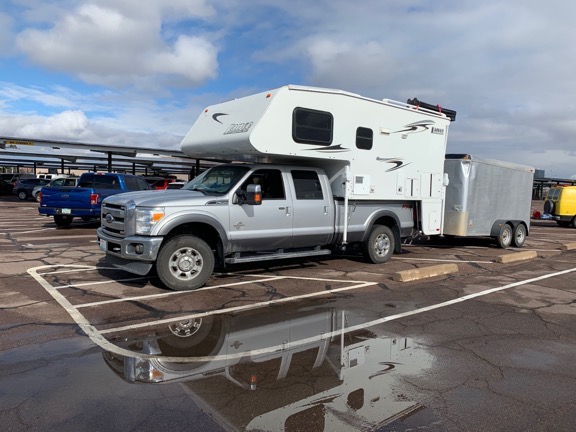
Here’s my truck, camper, and original utility trailer not long after I bought it. Note the dent in the upper corner.
So I got on Craig’s list and bought a 12-foot cargo trailer. It was a bit “rough,” as I blogged not long after acquiring it. I hooked that up to the back of my rig and stowed all the extras I’d crammed into my truck and camper. It had two axles, but I had trouble getting the tow ball height just right to distribute weight evenly on both of them. It was also a bit rickety and had me worried about long distance driving with it. But it made it back to Washington intact. I wasted no time selling it to a friend who was looking for a tool trailer that could be parked on job sites.
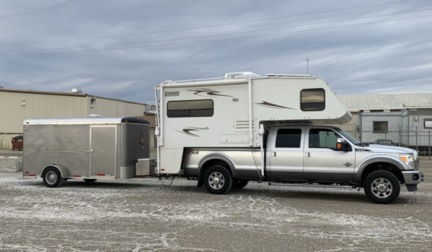
Here’s my current rig. The newer trailer is in much better condition than the original one and includes a toolbox on the tow hitch.
I went hunting for a new one. Literally new. My search brought me down to Yakima, where I stopped in at the Lance dealer for a part I needed for my camper. I mentioned that I was going to look at some utility trailers at a dealer down the road. Mike, the co-owner, mentioned offhand that he and his partner brother had a utility trailer that they never used and would consider selling. I took a look. It was almost exactly what I wanted. I looked at the new ones, then called Mike back and started negotiating for his. About a month later, at the tail end of a trip to Tacoma, I picked it up.
I started customizing the interior almost immediately, adding E-track to the walls so I could secure various items to it. The goal was to turn it into a sort of mobile jewelry shop that could also haul the things I needed to do jewelry shows and camp. I loaded it up and secured everything, but wasn’t very happy about its setup as a shop — I had to take out too many things and set up a workstation on folding tables and then be sure to stow everything before moving. Boxes were big and piled up and difficult to access. The IKEA drawer units I’d put in had limited storage space for the weight they added to the rig. It was uncomfortable and inconvenient and it just didn’t work out the way I’d imagined it would.
So this year I built the tables and shelves I needed to make a real shop area in the front of the trailer, leaving the back wide open for show equipment and camping stuff.
Here’s a brief video I shot the other day that shows off my mobile studio space while I’m parked. It also includes a glimpse of my new inverter. And did you know that I maintain a YouTube channel for ML Jewelry Designs? Find it here.
My Power Needs
Before I discuss my needs, I need to make it clear that I camp off-the-grid. I’m usually not in a campground, but if I am, that campground usually does not have any utilities running to the site. That means I need to be self-sufficient with power (as well as water and sewer). I rely primarily on solar power but also travel with a 2kw Honda generator, just in case I have cloudy weather or unusually high power needs in my camper.
What I’m discussing here is my jewelry-making power needs.
My primary jewelry-making tool is a flex-shaft. The popular brand name is Foredom and that has become a bit of a generic term for that kind of tool, but mine is a Eurotool brand. It’s basically a hanging drill motor attached with a flexible shaft to a hand piece that can accept Dremel sized tools. You turn it on and off with a foot pedal that controls the speed of the motor. Because this tool requires AC power and the only way I can get continuous AC power while camping off the grid is to run my generator (which I don’t like running because of the noise), I didn’t bring it. Instead, I brought my battery operated Dremel, with its spare battery and charger.
I also use a small rotary tumbler quite a bit, as I discuss in this blog post. That also requires AC power, but it only needs 36 watts. Unfortunately, sometimes I need to run it for hours at a time. I was able to run it with a portable 150 watt inverter attached to the power port in my truck or in a battery pack I’d bought primarily to run my telescope. I quickly ran down the battery pack and had trouble getting it charged back up. And the idea of draining my truck batteries to run a tumbler was not very pleasing.
I also found myself with lots of other little batteries that needed charging. My camper does not have an inverter; due to limited space, it only has two 12v batteries. (Higher capacity 6v batteries will not fit in the storage cabinet — I’ve already looked into it.) On short winter days with a low sun angle, the 200 watts of solar flat-mounted on the roof can basically keep those batteries charged and let me use DC power ports to charge my phone, watch, and iPad but not much more.
The Solution
Last year, I’d looked into getting a solar charged battery power system installed into the cargo trailer. The trailer has a metal toolbox on the hitch bars and I figured it would make a good place to put the batteries. I already had a Zamp portable solar panel that I could attach to my camper. Why not use that to power a 2kw system on the utility trailer? But the estimate I’d gotten — more than $3,000! — gave me pause. A whole year’s worth of pause
This year I went forward with a less ambitious setup that included just two 6v batteries and a 1kw inverter. I had it installed in Quartzsite, AZ, where there are numerous solar power dealers who work on RVs. (I went to Solar Bill’s, but Discount Solar is another dealer there.) It still wound up costing about $1200. But if I kept the batteries charged, I would have all the power I needed to run my tumbler and charge just about any device that needed charging.
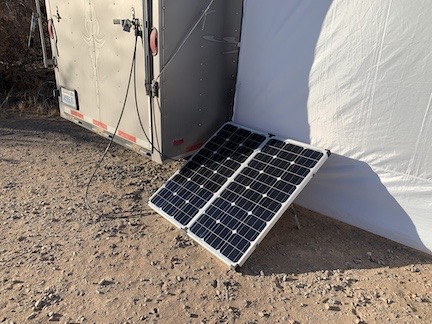
Here are my solar panels in my current setup location. The original location had the panels in full sun from around 9 AM to 5 PM; in this new spot, they get sun at 8 AM but start falling into shade around 3:30 PM. The cable for the panels is only 12 feet long and the plug for it is at the front of the trailer. Poor parking planning on my part, but it’s all good.
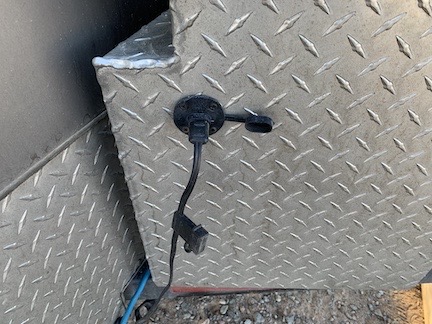
Here’s where the panels plug into the side of the toolbox where the batteries are.
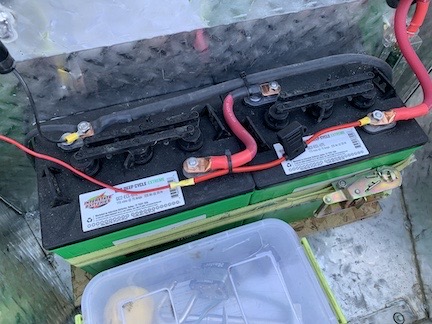
Here are the batteries inside the toolbox. There’s a vent hole behind them. I lost about half the box capacity to store things; I can’t put anything on top of them.
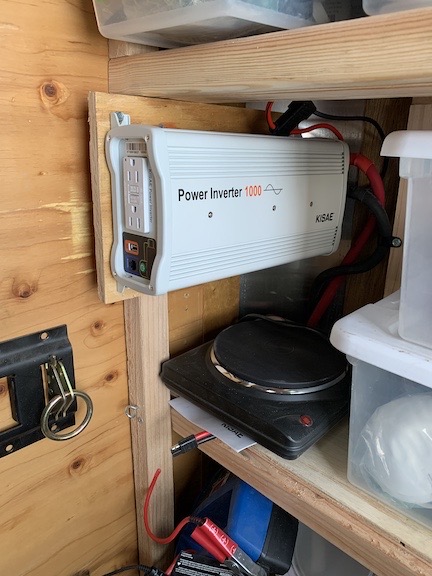
Here’s the inverter, mounted in the front corner of my trailer just under one of the shelves. I’ll likely use the area around it as a charging station for various batteries in the future.
I brought it all back to camp, set up the solar panel in a good spot, and let the system do its thing. It was a bit iffy at first. Although the batteries were charged when I got them, I don’t think they were at 100%. My immediate use brought their power levels down a lot more than I expected. But after a few days with bright sun on those panels — including days when I didn’t use the power in the trailer at all — I soon had the batteries fully charged and able to share that power with any device I plugged in without a considerable power droop. I even managed to charge that big battery pack overnight without draining the system batteries.
I’ve since set up a little portable table near the inverter where I’ve parked various battery chargers — for my Dremel, my Ryobi tools/lights, my drone, and even my laptop. It has become the go-to place for charging things and it does a remarkable job. In the future, I’ll probably just use the shelf beside the inverter to set up a charging station.
Since moving my cargo trailer closer to my camper, I’ve also moved those portable panels closer. That means that if the utility trailer batteries are charged up and I don’t need them, I can attach another 160 watts of solar to my camper to bring those batteries up to full.
And yes, I did look into putting 200 watts of solar on the utility trailer’s roof. It would have cost me an extra $1400 for the panels, controller (which is built-into my portable panels), wiring, and labor. Not worth it — at least not yet.
Long Term Benefits
I know I won’t be traveling like this every winter forever. In fact, I’m starting to think the this might be my last year at Arizona’s Colorado River backwaters, where I’ve been coming since 2014. I’m starting to feel as if I’m stuck in a rut and and after living too many years in someone else’s rut, there’s nothing I hate more than that.
I’ve been thinking of making some major changes in my life that includes shifting focus on how I spend my free time. There will come a point when I don’t need that utility trailer at all. It seems a shame when I’ve spent so much time and money customizing it.
But the way I see it, the improvements I’ve made to the trailer make it even more flexible for me or a future owner. I can see converting it into a small living space for rugged camping — there are quite a few people camping in converted utility trailers out here in the desert. My jewelry workbench illustrates how easy it is to build removable structures onto the E-Track I’ve installed. Where I’ve put in a workbench, someone else could easily make a platform for a cot or other sleeping space. The storage shelves in the nose of the camper aren’t pretty, but they do make it possible to store lots of things in a way that can be easily secured in transit. And the power makes it even more attractive for off-the-grid use. All it takes is a need and a little imagination.
Until then, I’m enjoying the upgrade.

